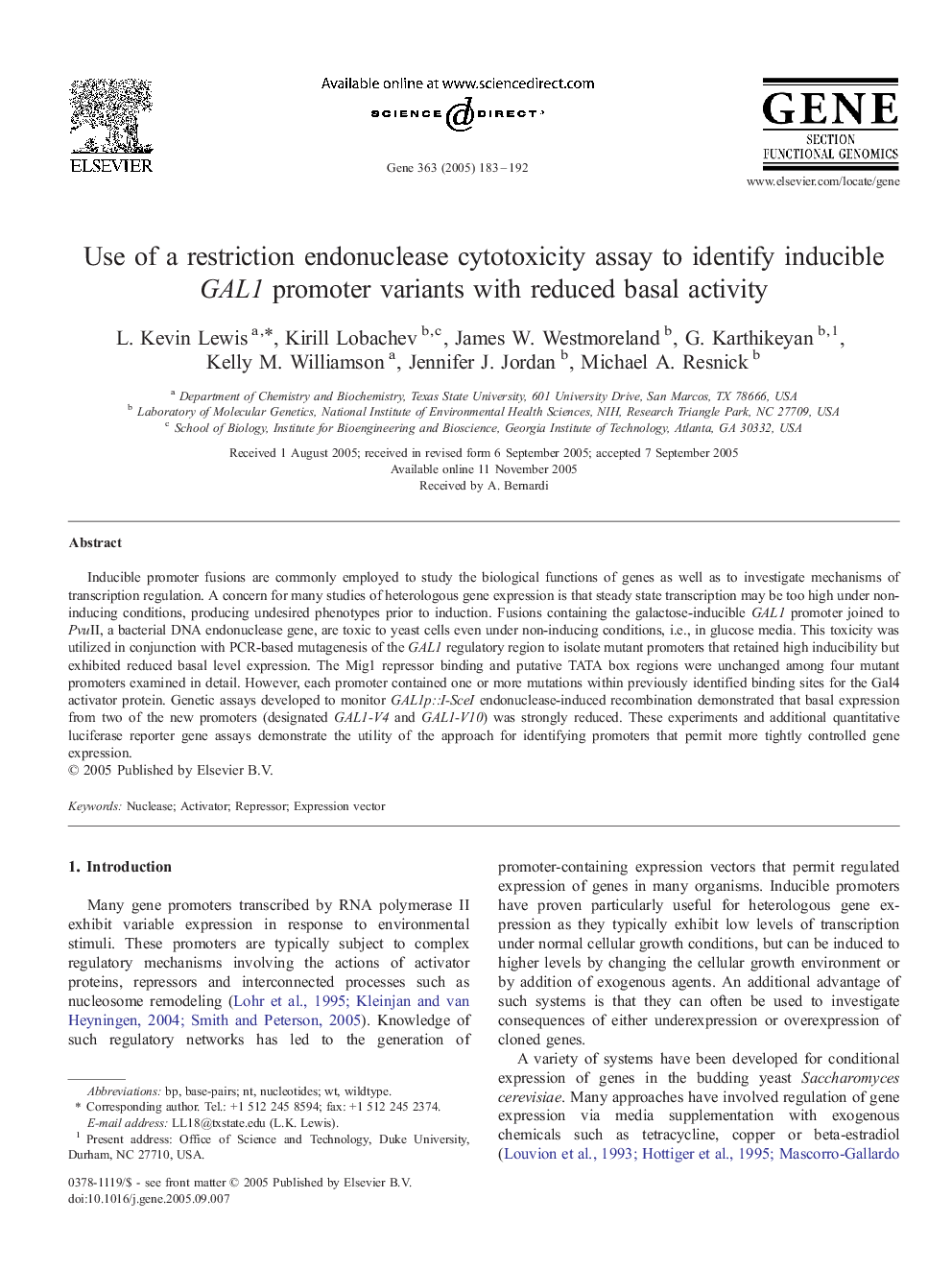| Article ID | Journal | Published Year | Pages | File Type |
|---|---|---|---|---|
| 9126881 | Gene | 2005 | 10 Pages |
Abstract
Inducible promoter fusions are commonly employed to study the biological functions of genes as well as to investigate mechanisms of transcription regulation. A concern for many studies of heterologous gene expression is that steady state transcription may be too high under non-inducing conditions, producing undesired phenotypes prior to induction. Fusions containing the galactose-inducible GAL1 promoter joined to PvuII, a bacterial DNA endonuclease gene, are toxic to yeast cells even under non-inducing conditions, i.e., in glucose media. This toxicity was utilized in conjunction with PCR-based mutagenesis of the GAL1 regulatory region to isolate mutant promoters that retained high inducibility but exhibited reduced basal level expression. The Mig1 repressor binding and putative TATA box regions were unchanged among four mutant promoters examined in detail. However, each promoter contained one or more mutations within previously identified binding sites for the Gal4 activator protein. Genetic assays developed to monitor GAL1p::I-SceI endonuclease-induced recombination demonstrated that basal expression from two of the new promoters (designated GAL1-V4 and GAL1-V10) was strongly reduced. These experiments and additional quantitative luciferase reporter gene assays demonstrate the utility of the approach for identifying promoters that permit more tightly controlled gene expression.
Related Topics
Life Sciences
Biochemistry, Genetics and Molecular Biology
Genetics
Authors
L. Kevin Lewis, Kirill Lobachev, James W. Westmoreland, G. Karthikeyan, Kelly M. Williamson, Jennifer J. Jordan, Michael A. Resnick,
